Your basket is currently empty!
Scottish Island Sea Glass Collection
Treasures from Atlantic and North Sea Shores
Sea glass doesn’t form in factories or workshops. It starts as broken bottles and jars that find their way into the ocean, where waves and salt water tumble the sharp edges for years until what emerges is something entirely different – frosted, smooth fragments that look like gemstones when wet. In Scotland’s islands, where the Atlantic batters the western shores and the North Sea rolls against the east, this transformation happens in some of the wildest waters in Europe.
The makers in this collection walk island beaches looking for these fragments. They know which shores the tides favour, which colours are rare, how the glass from the Atlantic’s rougher waters develops a different frosted texture than pieces from the North Sea. They collect what the ocean offers, then turn these found treasures into jewellery and art using traditional techniques that require patience and considerable skill.
This collection brings together seven pieces made from sea glass collected in Skye, Shetland, Tiree, Lewis, and Colonsay. Each item uses glass fragments that spent years being shaped by Scottish seas before being found, cleaned, and carefully crafted into something you can wear or display.
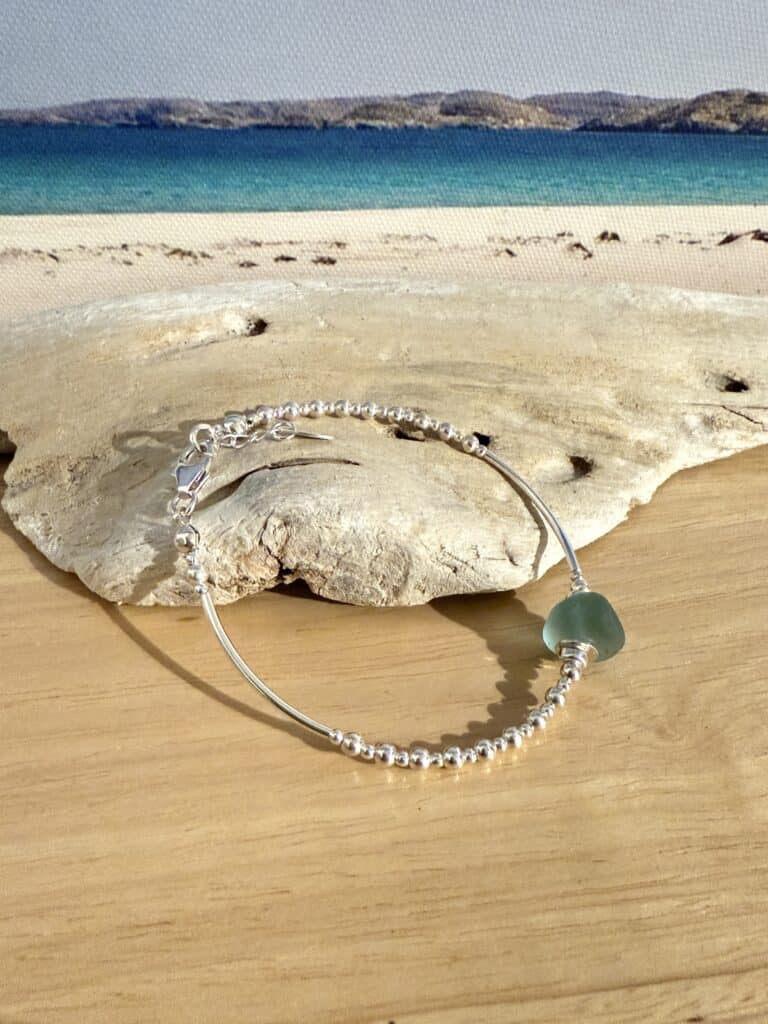
Tide Pool Hebridean Sea Glass Bracelet – £42
Sea glass collected from Hebridean shores, set in sterling silver on a bracelet that brings a piece of the Outer Hebrides with you wherever you go. The bracelet measures approximately 7¼ inches with an extension chain, and comes beautifully presented in a Salka gift box and sleeve.
Handmade Sea Glass Bangle in Recycled Sterling Silver – £114
Green sea glass collected on Colonsay beaches, has been set in recycled sterling silver. Hazel Rose has been beach combing on her Hebridean island since 2015, originally to sell to summer tourists but now as part of her established jewellery practice. The bangle measures 6cm x 5cm, carefully finished by hand and hallmarked at the Birmingham Assay office.
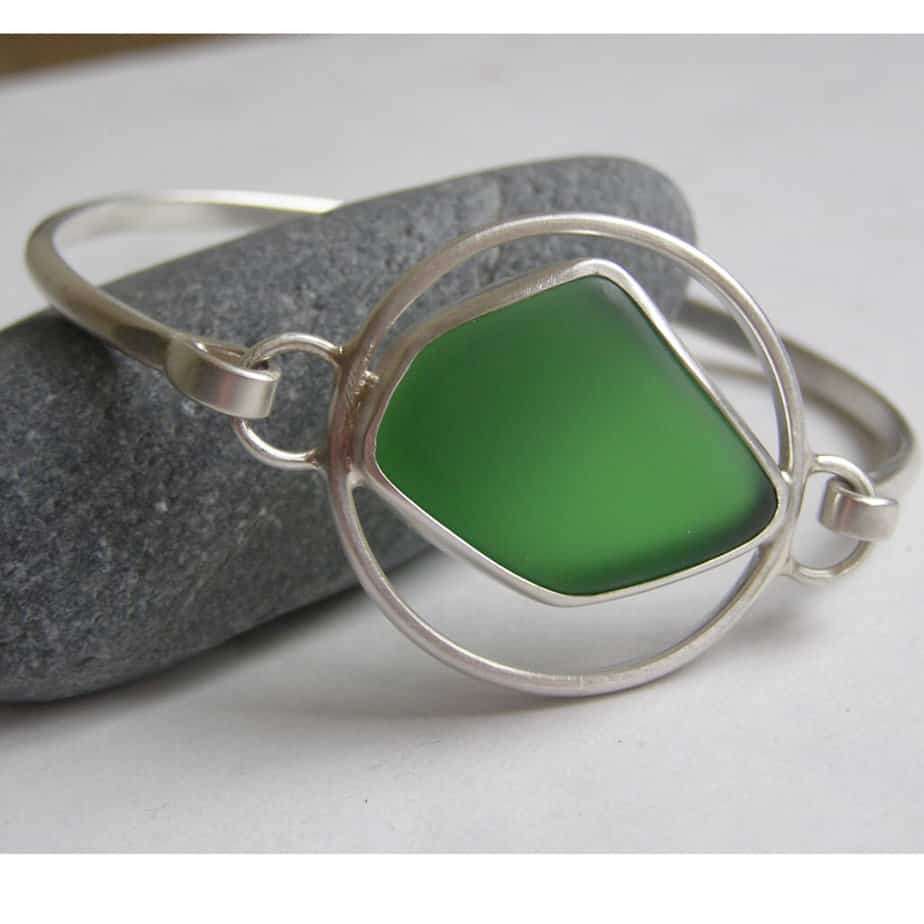
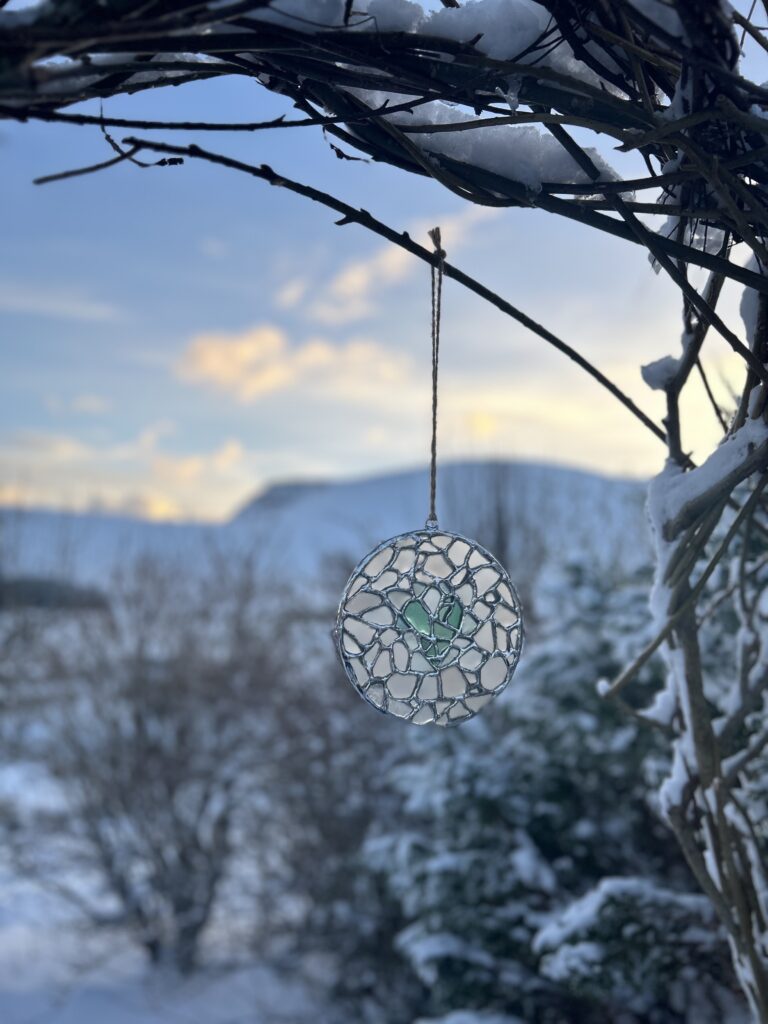
Aqua Green/Blue Heart Sun-Catcher – £65
A 6-inch diameter sun-catcher set with white and natural aqua green/blue sea glass collected from Skye beaches. The maker uses the Tiffany copper foil method. The finished piece is polished, sealed with wax, and hung with jute cord. When sunlight passes through, the colours cast shadows across your wall.
Shetland Sea Glass Stack Pendant – £29
Made from pieces of different coloured sea glass collected from around the Shetland Isles, stacked and suspended on a sterling silver belcher chain. If you have a favourite colour, Sarah can accommodate requests. The pendant comes in a gift pouch, and you can choose your preferred chain length.
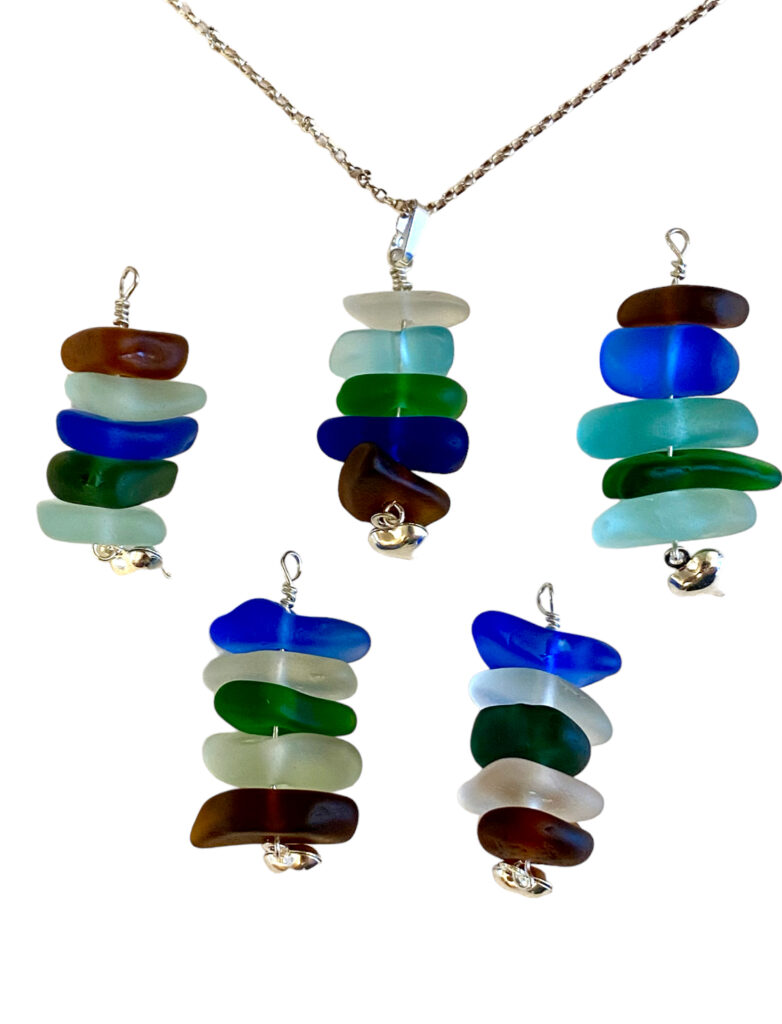
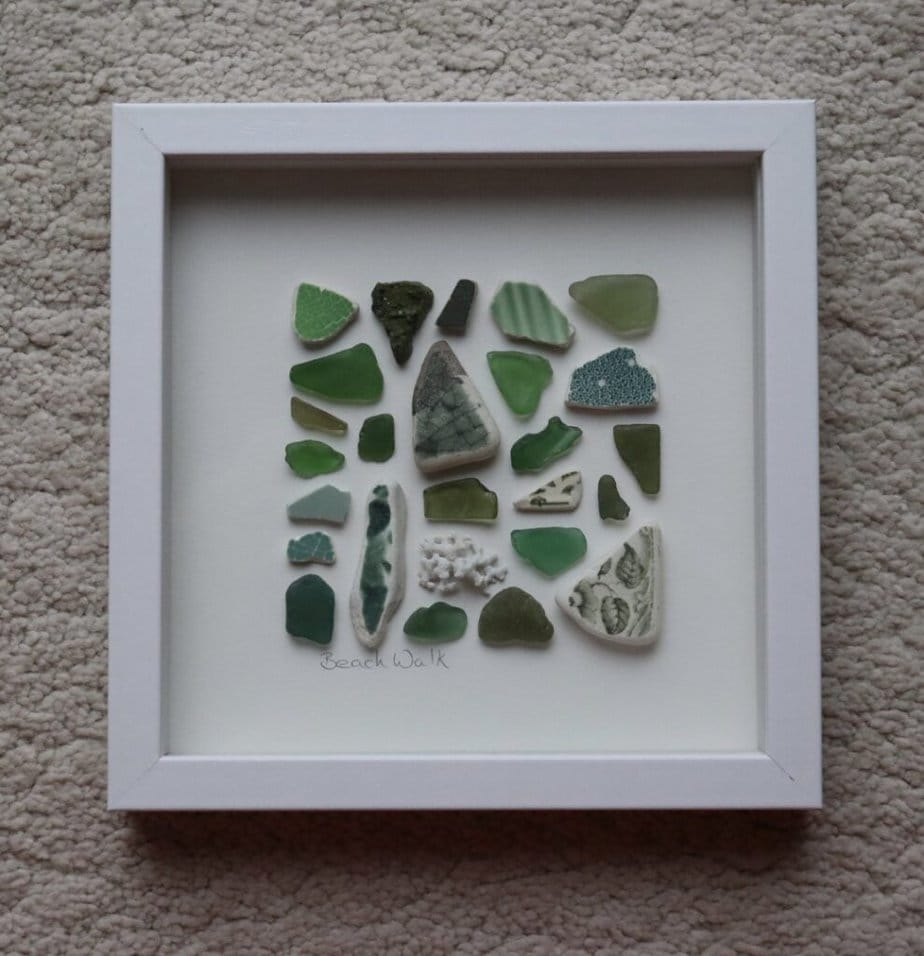
Beach Walk (Green) – £40
Sea glass collected from Tiree shores, and carefully arranged in a white frame. Each piece is unique – Lynsey arranges whatever fragments they’ve found into compositions that capture the colours and character of Tiree’s beaches.
Green Sea Glass Trinket Bowl – £45
Sea glass collected from Skye beaches, is pieced together like a complex jigsaw using the traditional Tiffany copper foil method. Each is piece wrapped in copper foil then soldered together. Made by Skye And Shore, no two bowls can ever be identical.
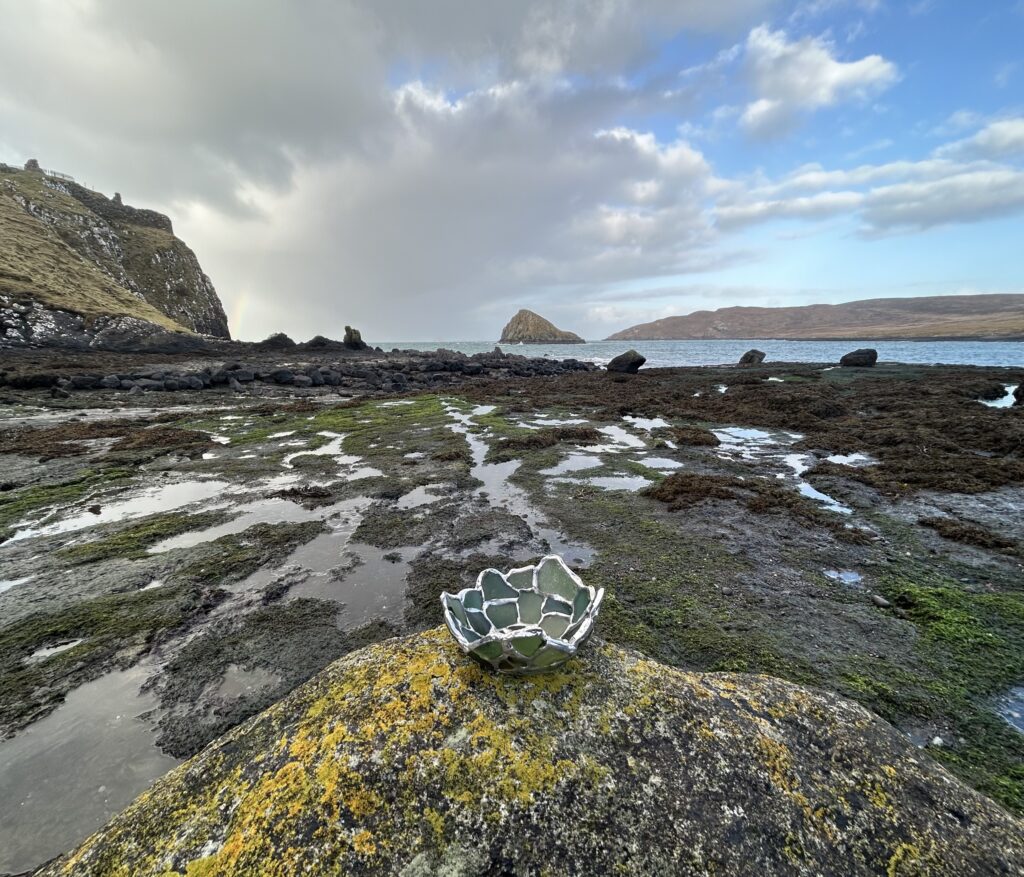
Why This Collection
Sea glass comes in colours that tell you about its origins. Clear and green glass – the most common – comes from bottles that held wine, beer, soft drinks. Brown glass held beer and spirits. Blue is less common, often from old medicine bottles or vintage glassware. The aqua-green shades favoured in this collection might have been perfume bottles, decorative jars, or vintage tableware.
Rare colours like red, orange, or yellow are prized because they’re uncommon – perhaps from old car lights, warning lanterns, or decorative glass from decades past. The makers in this collection work with what the sea provides, which means availability shifts with the tides and seasons. What you see in each piece is what the ocean offered up after years of transformation.
What Makes This Collection Different
The sea glass market includes imported glass sold as “sea glass” that was actually tumbled in factories to fake the frosted appearance. It includes items “inspired by” sea glass that contain no actual sea glass. It includes jewellery where the “found on Scottish beaches” claim is vague at best.
This collection features makers who tell you exactly which island they work on, which specific beaches they collect from, what techniques they use. When Salka Jewellery says the glass came from Lewis beaches, you know it’s true because they’re a family business living in Lewis. When Hazel Rose says she collected the glass in Colonsay, you can verify she lives there and has done since she started beach combing in 2015. The provenance is genuine, and the making happens in island workshops you could visit if you travelled there.
Caring for Sea Glass Items
Sea glass jewellery requires minimal maintenance. The glass itself is inert and durable, though the sterling silver settings benefit from occasional polishing. Avoid harsh chemicals that might damage the silver. Remove jewellery before swimming or bathing. Store pieces in the provided pouches to prevent scratches.
Sun-catchers and framed displays need even less attention. Keep them out of the direct path of hands or pets that might knock them. Clean glass gently with a soft cloth if dust accumulates. The jute cord on sun-catchers may eventually need replacing if exposed to strong sunlight for years, but the glass itself will last indefinitely.
Perfect for
Daily Reminders
The pendent and bracelet are pieces you wear or use every day, carrying a small connection to Scotland’s islands wherever you go. They’re practical items with stories attached.
Gifts for People Who Have Everything
Sea glass jewellery and art works well for people who don’t need more possessions but appreciate things with genuine provenance. Each piece comes with a story about where it was found and how it was made.
Marking Occasions
The bangle or pendants make meaningful gifts for birthdays, anniversaries, or celebrations. They’re special enough for important moments but wearable enough for regular use.
Bringing Light Into Homes
The sun-catchers and framed displays are about capturing and transforming light. They work in windows, conservatories, or any space where natural light will bring out the colours.
Scottish Connections
For people with Scottish heritage or who’ve visited the islands, these pieces offer tangible connections to specific places – not generic “Scottish” items but objects made from materials found in named islands by makers who live there.
Still looking?
-
Tiree Puffin Glass Bauble by Emma Ball
£12.00 -
Sea glass stitch makers
£8.95 -
Isle of Skye Wine Glass
£22.00 -
Green Sea Glass Trinket Bowl
£45.00 -
Wave Tea Light holder
£43.00 -
Isle of skye shot glass
£8.00 -
Fishing boat
£24.00 -
Fishing boat
£24.00 -
Fishing boat
£24.00










